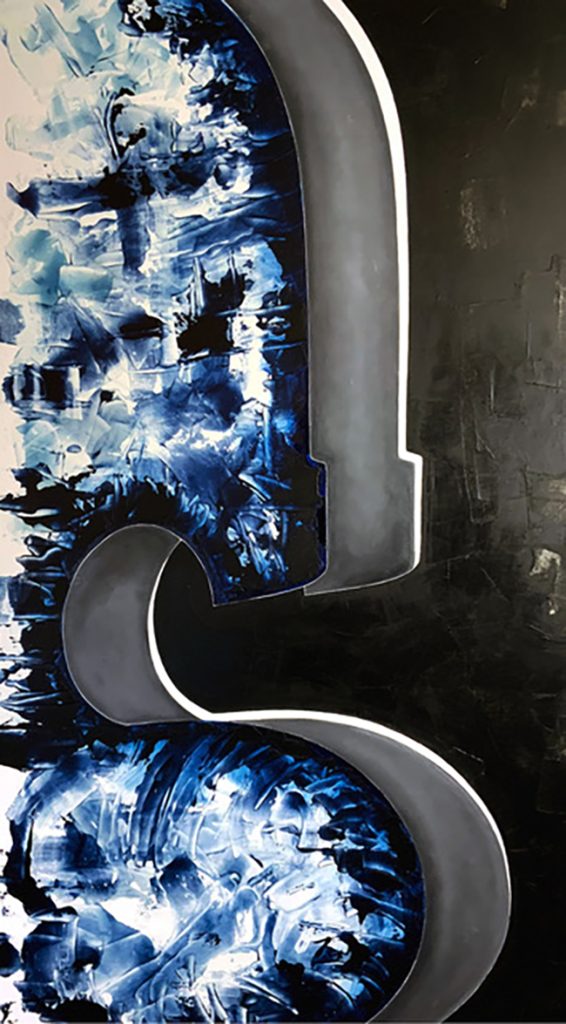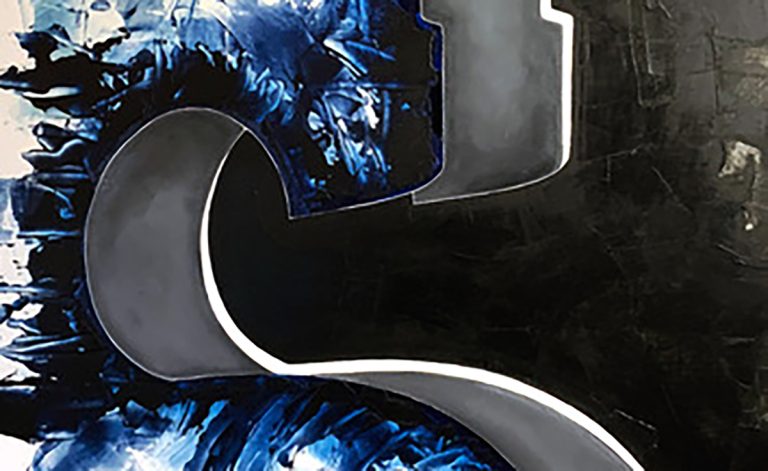Samaj X is an artist whose work delves deep into the layers of the human experience—merging personal reflection, cultural heritage, and contemporary life into a powerful visual language. His art is a blend of intuition and introspection, where each piece emerges from the intersection of the collective conscience and the individual’s inner world. For Samaj X, the process of creating art is as transformative as the finished work itself, a journey of discovery that ultimately reveals a singular identity in the chaos of inputs.
In his abstract paintings, Samaj X explores the complexity of life’s multifaceted nature. He doesn’t just paint what he sees, but rather, he paints what he feels, what he experiences, and what he internalizes. His art is a manifestation of thoughts, memories, culture, and even societal pressures. What results is a body of work that speaks to the universal human experience while retaining its deeply personal origin.
Granpa Was a Moor

Samaj X’s series Granpa Was a Moor is a reflection on heritage, time, and cultural layering. The work, which took shape between 2021 and 2022, is deeply informed by his focus on the Blackamoors—figures historically associated with African and Islamic influences in Europe. For Samaj X, this series is not just about history but about how history continues to shape the present.
The artist sees association as a means of continuity, a way to keep narratives alive and growing. This idea plays out in the way he constructs his compositions, allowing motifs and elements to spill over from one work to another, forming a visual dialogue that stretches across the series. There is an unfolding nature to these paintings, as if time itself is embedded in the layers of pigment and form.
One of the defining aspects of Granpa Was a Moor is how it engages with Moorish aesthetics. Rather than directly replicating traditional Moorish imagery, Samaj X lets its essence seep into the work organically. The use of deep blues—reminiscent of lapis lazuli, a stone historically prized in Moorish and Islamic art. But beyond color, there is a sense of structure and rhythm in his work that echoes Moorish architectural patterns and calligraphic flow.
Samaj X is not interested in nostalgia. His engagement with history is not about looking backward but about understanding how the past informs the present. The Blackamoors, once symbols of power, servitude, and exoticism in European art, now serve as a jumping-off point for a broader exploration of identity and representation. Through abstraction, Samaj X breaks away from rigid narratives and instead presents identity as something fluid, layered, and in constant motion.
This motion manifests in the way the paintings feel assembled through kinetic energy—brushstrokes that seem to vibrate, forms that shift and reconfigure upon repeated viewing. The randomness he speaks of is not chaotic but rather a natural ebb and flow, a movement that mirrors the way cultures and identities evolve over time. Nothing in these works feels static; they demand engagement, asking the viewer to sit with them, to see the hints of history embedded within their abstraction.
Samaj X’s process is deeply personal, but it resonates on a wider scale. His paintings invite viewers to consider their own connections to history, to think about the ways in which cultural influences shape our lives in ways both seen and unseen. Granpa Was a Moor is not just about the past—it is about the ways the past remains present, always unfolding, always adding new layers to the story.

